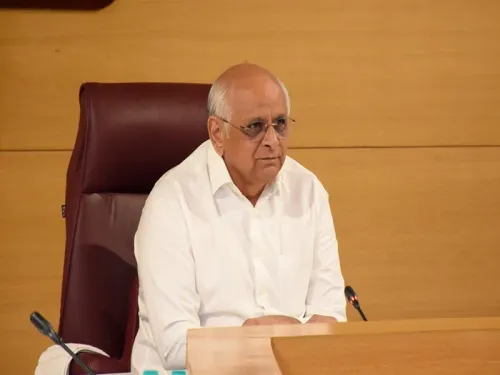What Makes ‘Operation Sindoor’ Unique?

Synopsis
Key Takeaways
- Operation Sindoor marks a strategic evolution in India's military response to terrorism.
- It integrates advanced technology and multi-domain military capabilities.
- The operation demonstrates India's readiness to target dual-use military-terror infrastructure.
- Precision strikes were executed using modern artillery and aerial platforms.
- The operation signifies India's commitment to national security and sovereignty.
New Delhi, May 7 (NationPress) Operation Sindoor has transformed India's military stance with a level of scale, depth, and technological sophistication that has not been witnessed since the 1971 conflict. In contrast to prior operations in Uri (2016) and Balakot (2019), which were rapid, targeted actions, Sindoor represents a multi-domain, high-precision assault across Pakistan’s Punjab province and Pakistan-occupied Jammu and Kashmir (PoJK). This marks a pivotal shift in India's strategy towards cross-border terrorism.
Security analysts argue that the Uri operation was a tactical ground-level surgical strike, while Balakot was the first aerial engagement since 1971. In contrast, 'Operation Sindoor' highlighted the seamless integration of airpower, artillery, and unmanned systems in a coordinated, prolonged offensive.
The deployment of loitering munitions (suicide drones) and various vector platforms allowed India to launch targeted strikes deep into enemy territory and across multiple fronts concurrently.
A notable aspect of Operation Sindoor was the Indian Air Force’s offensive on Bahawalpur, a high-value target that contains the Pakistan Army’s 31 Corps Headquarters. This move was not merely symbolic; it illustrated India's preparedness to strike at dual-use military-terror infrastructure. The IAF utilized Rafale jets equipped with SCALP and HAMMER missiles, alongside long-range air-to-surface armaments, significantly extending its operational reach compared to earlier missions.
Sources highlight that the strike on Bahawalpur was one of the most strategically vital components of Operation Sindoor, executed by the Indian Air Force using multiple aircraft platforms. Given that Bahawalpur is home to the Pakistan Army’s 31 Corps Headquarters, it represents a critical military zone.
By targeting this location, India signaled its intent to strike dual-use infrastructure where terror and military resources intersect, according to officials. The diverse aircraft utilized ensured both deep penetration and precise targeting, showcasing the Air Force’s enhanced operational flexibility and long-range strike potential.
The Army's involvement was equally sophisticated, employing precision-guided Excalibur 155mm artillery shells, M777 lightweight howitzers, and real-time GPS and drone-assisted targeting, resulting in strikes that were both surgical and impactful. This operation also marked one of the rare instances post-1971 where India officially deployed missile systems across the border.
Another remarkable feature was the operation's timing. Officially spanning from 1:05 a.m. to 1:30 a.m., it provided Indian forces with the opportunity to engage, reassess, and strike again if necessary. Sources confirmed that Pakistan’s artillery response lagged by 20–25 minutes, emphasizing the element of surprise and precision achieved.
Moreover, an area in Khyber Pakhtunkhwa has been identified for potential future operations, indicating improved intelligence integration and target tracking capabilities.
In summary, Operation Sindoor was more than a mere retaliatory measure; it was a proclamation of India's evolving military doctrine: decisive, technologically advanced, and strategically bold, capable of striking both terror networks and their supporting infrastructure deep within hostile territory.









